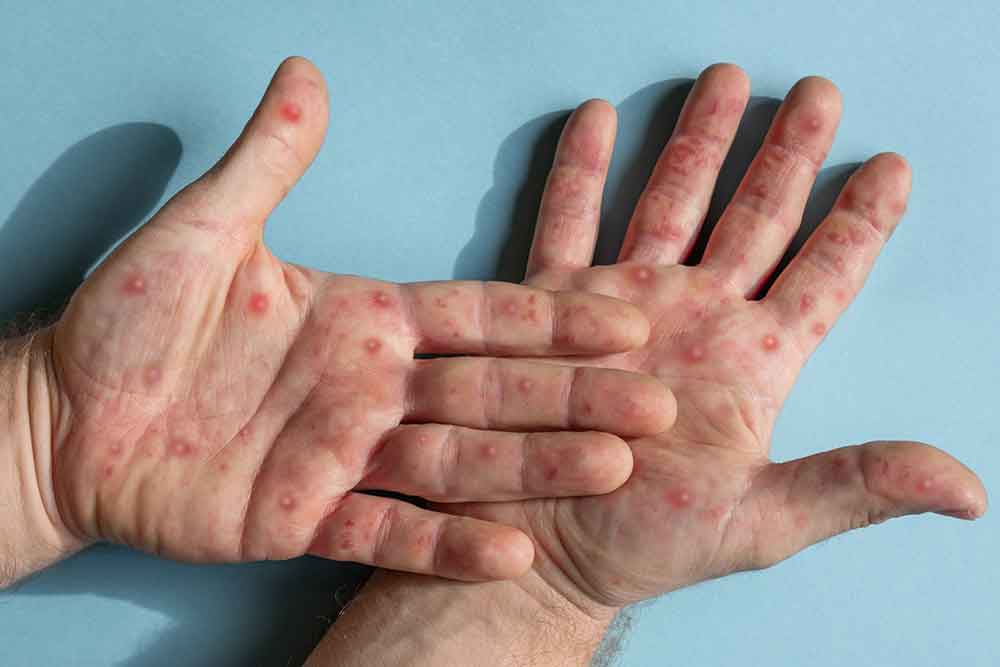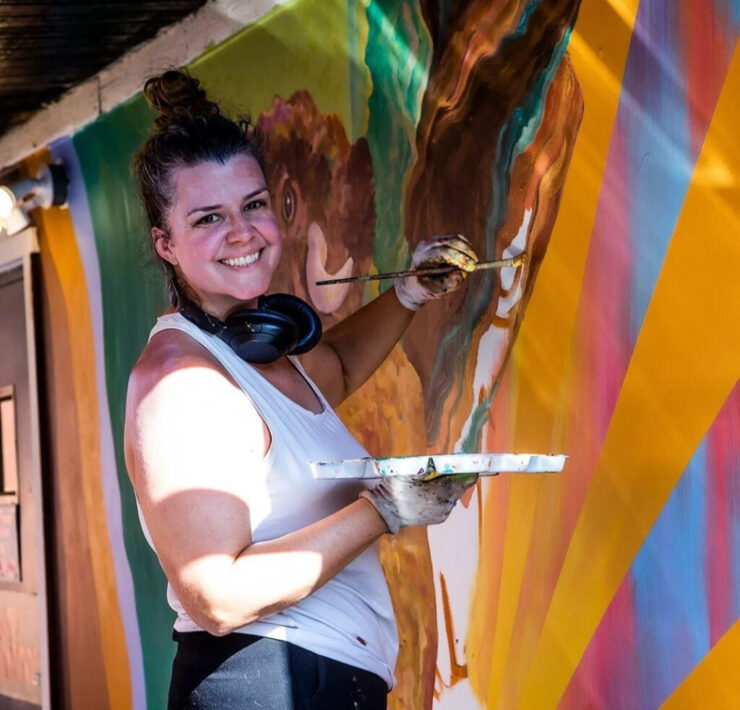A Common-Sense Guide to the Monkeypox Virus

Anne Hebert was born and raised in Denver, CO. She…
Everywhere you look right now, monkeypox is a hot topic. Articles about the virus abound and instill fear in Americans just beginning to emerge from the COVID-19 pandemic fallout. Now, monkeypox sounds like the new threat to wellness. Let’s take a look at where monkeypox came from, how the virus affects those who contract it, and how to treat and recover from it.
What is monkeypox?
Monkeypox is a pox virus that comes from the same family of viruses as smallpox. The virus presents symptoms including fever, chills, exhaustion, swollen lymph nodes, and most notably, blister-like sores or lesions that begin at one site and spread across the body. “The most common areas for monkeypox lesions are on the hands, arms, legs, genital area and face,” says Dr. John Douglas at the Tri-County Health Department.
Monkeypox sores initially look like a red bump or pimple. They typically itch or hurt and develop a fluid filled top that bursts before it scabs over and begins to heal. The length of infection is usually two to four weeks.
Where did monkeypox come from?
Monkeypox is not a novel, or new virus; it’s been around since the 1950s. Although it was first identified in lab monkeys, the virus is endemic to parts of west and central Africa and originated in rodents. The virus is a pox virus similar to smallpox but much less serious.
How common is monkeypox?
In Colorado, monkeypox is relatively uncommon. Dr. Douglas emphasizes that the virus is less prevalent than HIV, syphilis and COVID. Monkeypox has been declared a national public health emergency due to global outbreaks of a disease that was previously confined to one area in the world. For transmission to increase, the virus simply had to be introduced into populations that would enable it to spread more effectively.
How can I get monkeypox?
Monkeypox is spread through prolonged close contact with monkeypox sores, contaminated surfaces or bodily fluids, including respiratory droplets. “It is important to note that the virus is not transmitted by people with no symptoms,” Dr. Douglas says.
Intimate contact is one of the ways monkeypox is most commonly transmitted due to skin-to-skin proximity and exposure to bodily fluids. Monkeypox is not considered a sexually transmitted disease (STD) since it can be spread in other ways such as sharing towels and contact with contaminated surfaces.
How can I protect myself?
“Monkeypox can be avoided by practicing good, overall hygiene,” Dr. Douglas says. Frequent hand washing is always a good idea. “Now is a good time to limit the number of sexual encounters one has with unknown or multiple partners. If you exhibit symptoms of the virus or believe you have been exposed, contact your local or state health department to become eligible for the vaccination.”
Dr. Douglas states that while there is not currently enough vaccine for entire at-risk populations, if you know you have been exposed to monkeypox you may receive vaccine priority.
I think I have monkeypox. Now what?
The first step is to see your physician to receive a diagnosis. A medication called T-POXX can limit the severity and duration of the disease. T-POXX can be taken orally or injected in patients who can’t swallow because of painful mouth lesions.
Cover the lesions to help them heal. A moist environment is more conducive to healing and reducing scar formation. Don’t scratch or pick at scabs. Instead, let them shed on their own. The monkeypox virus can still spread when scabs are present, so wait to resume your normal activities until scabs have shed and skin is fully healed. Once healed, be diligent about wearing sunscreen to help minimize the darkening of scars.
When will the monkeypox vaccine be available in Colorado?
Dr. Douglas stresses that the vaccine should be available to more people by the end of fall. In the meantime, taking precautions will likely protect against getting the virus to begin with.
“Monkeypox is here. It’s spreading and it’s painful,” Dr. Douglas says. “Fortunately, the virus is not fatal. Healthcare providers and communities can work together to offer education about the virus and precautionary measures. This will prevent entrenchment in vulnerable populations. This does not have to be an ongoing problem.”
What's Your Reaction?
Anne Hebert was born and raised in Denver, CO. She attended Manual High School and the University of Denver. In addition to writing, Anne has worked in music video production and loves music of all genres.










